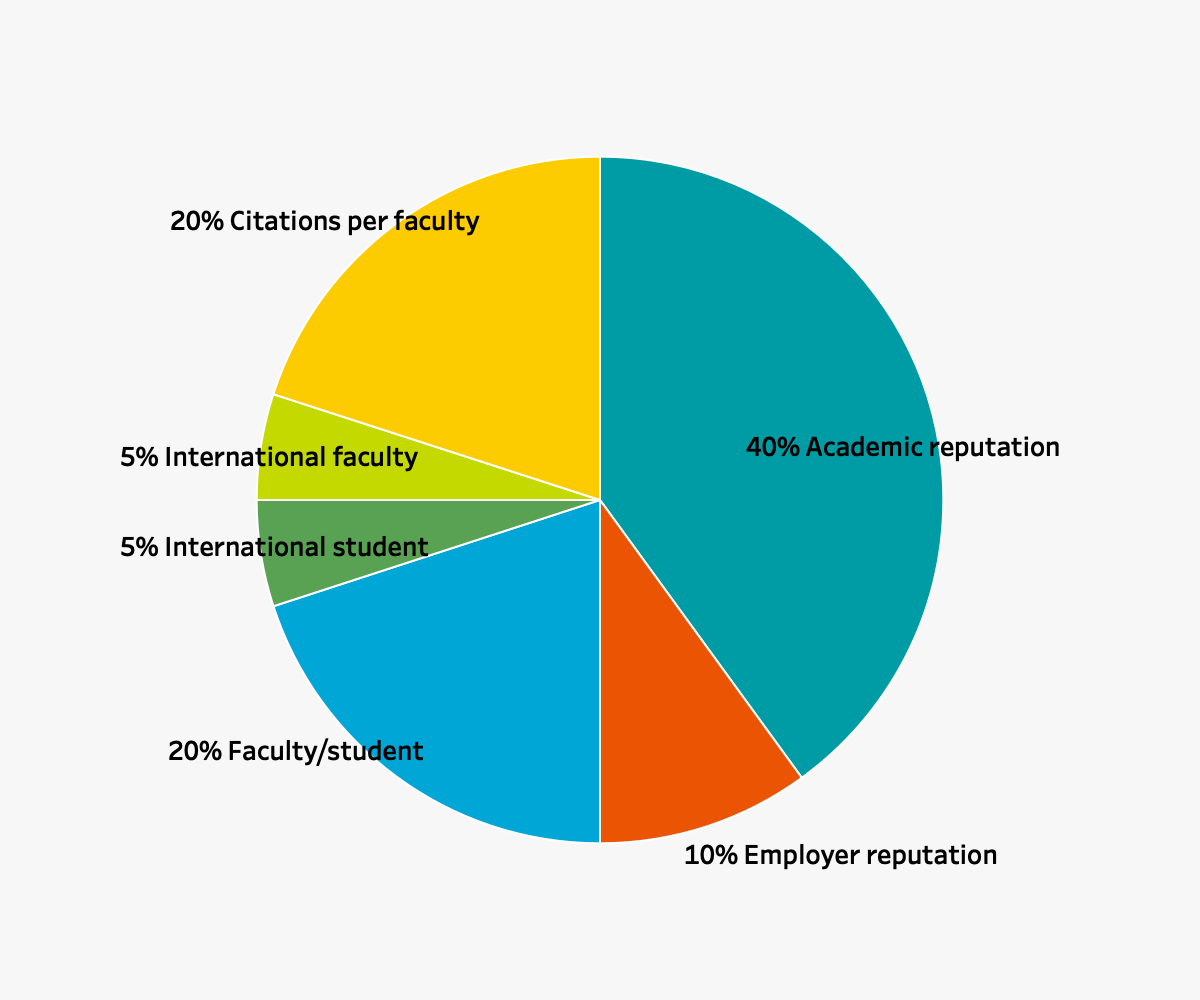Methodology
QS World University Ranking
The main indicator in the QS WUR ranking is reputation; it determines 50% of the score (40% for academic reputation and 10% for employer reputation). In order to determine the reputation of universities, QS conducts an annual survey.
The ratio of students to academic staff accounts for 20%, which is used to indicate the quality of education. The quality of the research is measured by the number of publications per Faculty Staff (academic staff), which accounts for 20% of the total score. Finally, the percentage of international students and international staff both count for 5%.
TU Delft scores very well on most indicators. It gets the lowest score for the “Faculty Staff-Student” ratio, which means that there are relatively many students for each academic staff member.
You can have an impact on the ranking – Have your say!
The main indicator in the QS WUR ranking is reputation, which determines half of the score. To calculate this, QS conducts an annual survey. Are you an academic? Or do you have regular contact with graduates? Then you can participate in the QS Global Academic Survey or the QS Employer Survey. If you are selected by QS, you will receive an invitation to participate in the survey between January and March. You can then indicate which universities you think excel in the field of research and education in the Netherlands and abroad.
Times Higher Education World University Ranking
The THE ranking uses a similar methodology to the QS ranking in the sense that reputation also plays an important role here. In total, 33% of the score depends on reputation; 15% on educational reputation and 18% on research reputation. For this, THE conducts an annual survey in collaboration with Elsevier, which involves some 10,000 respondents who are selected each year to produce a representative sample. In the survey, respondents can nominate universities within their own academic field both in the fields of education and research.
For the THE ranking, the main indicators (education, research and internationalisation) are divided into a set of sub-indicators. Education accounts for 30%, which includes the teaching reputation survey (15%), staff-student ratio (4.5%), PhD to Bachelor ratio (2.25%), PhD degrees to academic staff ratio (6%) and institutional income (2.25%). Research also accounts for 30%, comprising the research reputation survey (18%), research income (6%) and research productivity (6%). The level of internationalisation accounts for a total of 7.5%, with the proportion of international students, international staff and international collaborations accounting for the same percentage. Citations account for 30% of the score and “Industry income” is worth 2.5%.
Shanghai Ranking (ARWU)
The THE ranking uses a similar methodology to the QS ranking in the sense that reputation also plays an important role here. In total, 33% of the score depends on reputation; 15% on educational reputation and 18% on research reputation. For this, THE conducts an annual survey in collaboration with Elsevier, which involves some 10,000 respondents who are selected each year to produce a representative sample. In the survey, respondents can nominate universities within their own academic field both in the fields of education and research.
For the THE ranking, the main indicators (education, research and internationalisation) are divided into a set of sub-indicators. Education accounts for 30%, which includes the teaching reputation survey (15%), staff-student ratio (4.5%), PhD to Bachelor ratio (2.25%), PhD degrees to academic staff ratio (6%) and institutional income (2.25%). Research also accounts for 30%, comprising the research reputation survey (18%), research income (6%) and research productivity (6%). The level of internationalisation accounts for a total of 7.5%, with the proportion of international students, international staff and international collaborations accounting for the same percentage. Citations account for 30% of the score and “Industry income” is worth 2.5%.



